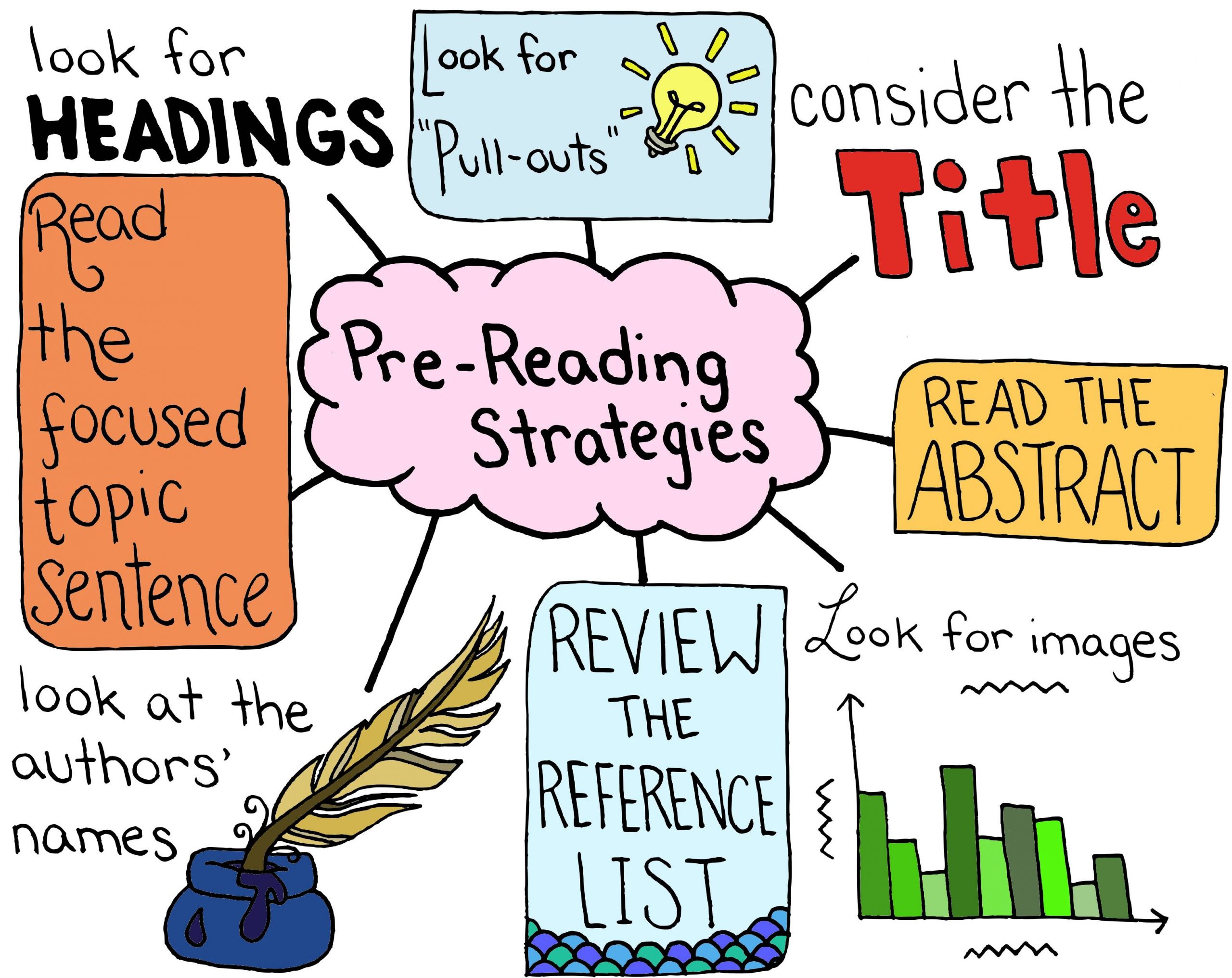14 Pre-reading Strategies
You should start with pre-reading before you do an in-depth read of the text. Pre-reading will give you an overall picture of what to expect and what the author wants you to know at the end of the reading. Before you begin, develop a clear purpose for your reading. Consider the purpose within the overall context of the course and concepts discussed in class. Keep in mind, how does this reading relate to any writing you may need to do for an assignment?

Figure 2.3: Pre-reading strategies
Consider these steps in pre-reading:
- Start by considering the title. A good title will inform you about the text’s content and what’s coming up.
- Look at the authors’ names. Have you heard of the authors? Do you know anything about them? In year one, you probably won’t be familiar with many authors in the nursing field, but over time, you will get a sense of common and credible authors. If you don’t know the author, check out whether they are from a reputable institution. You can always Google them to look for more details.
- If available, read the abstract. The abstract provides a brief summary of the text and is often found at the start of a journal article.
- Skim through the article, looking for headings or “pull-outs” (content that is pulled off to one side or highlighted in a box). Headings often give clues about the text’s content and can show you how the subject has been divided into sections.
- Look for images: photographs, charts, graphs, maps, or other illustrations. Images, and their captions, often provide valuable information about the topic.
- Most academic texts and essays follow a fairly similar structure, including beginning every paragraph with a strong, focused topic sentence, which is the main point. You can often get a quick understanding of a text by simply reading the first sentence in every paragraph. Some authors may use the second sentence as their topic sentence; if you notice this pattern, focus on reading the second sentence in each paragraph.
- Some people suggest reviewing the reference list so that you can get an understanding of the authors’ sources and identify any sources that could be more relevant.
After working through the above suggestions, see if you can figure out the main purpose of a text simply by pre-reading. If the pre-reading has worked well, giving you clues to the text’s content, your actual in-depth reading will be easier and more effective. You will also begin reading with your curiosity already aroused, which is a great way to start!
Activities: Check Your Understanding
Attribution statement
This page was remixed with our own original content and adapted from:
The Word on College Reading and Writing by Carol Burnell, Jaime Wood, Monique Babin, Susan Pesznecker, and Nicole Rosevear, licensed under a Creative Commons Attribution-NonCommercial 4.0 International License, except where otherwise noted. Download for free at: https://openoregon.pressbooks.pub/wrd/
A brief summary of a text.

